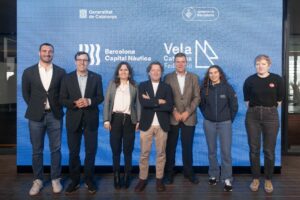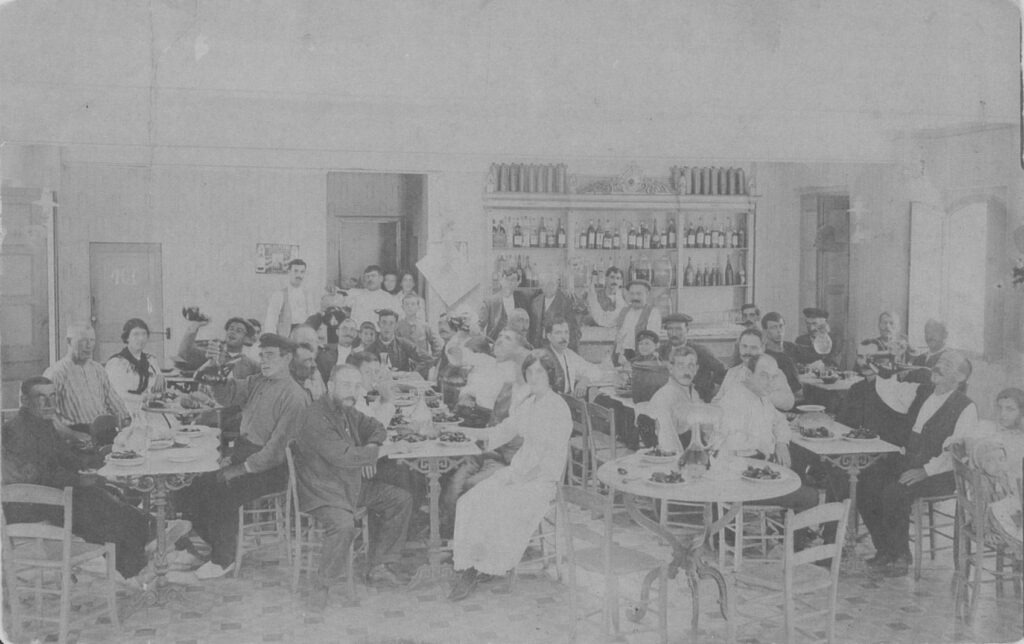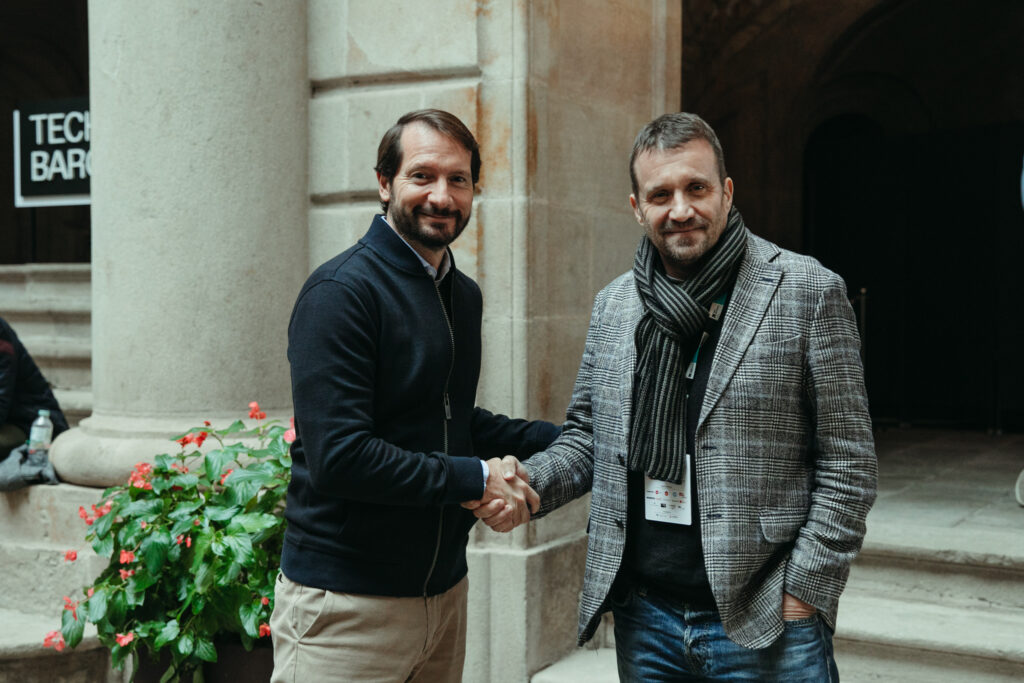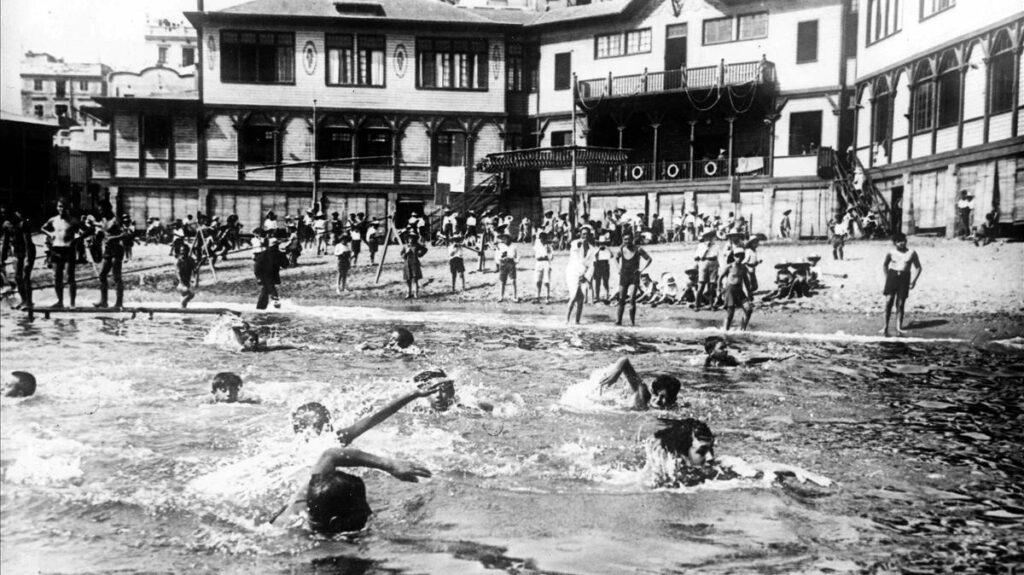President of the “Associació de Geganters de la Barceloneta”.
There are cultural manifestations that, although we are aware that they make up our identity as a collective, will possibly disappear -and sometimes unfortunately disappear- if they do not find someone passionate and above all committed to maintaining them. In the case of the “Gegants de La Barceloneta”, that someone is Carme Tomás.
Q-Carme, to begin with: what is understood by popular culture?
Popular culture is that culture that comes from the people and is dedicated to the people. It has many fields. From singing and dancing to any other manifestation.
Q- People that neglect their popular culture neglect their roots, their history. (?)
I would say that it is not the people who neglect their culture. It is the Administrations that do not give it the importance it deserves. And that culture without official support in the form of resources and dissemination does not subsist.
Q- But we import celebrations that take root in time and replace the ones that were there.
They have an important marketing behind them. I don’t know if they are more attractive, but these foreign manifestations usually know how to present themselves better.
Q-Then, the popular culture can mutate with the population at that moment.
Yes, the manifestations that people who come from abroad bring and that they usually keep strongly as a symbol of their origin are also part of the popular culture of a territory. For example, in Argentina there is a Catalan casal that has a great activity, it is a strongly established Catalan culture there.
Q- It is an exportable and importable good.
We simply make it our own. For example, the April Fair. We have a good time, and we make it our own. But it also has a lot to do with the importance given to it by the political powers. Finally, they are votes.
Q- How do you take care of it?
In small towns (Tarragona, Lleida and Girona regions) it is taken care of and given the prominence it deserves, but in a city as big and heterogeneous as Barcelona it is more complicated. There are so many manifestations of all kinds that it can be diluted. That is why a special effort is required from the entities that are dedicated to it here. And, of course, it requires a certain sensitivity on the part of the politician on duty.
Q- Let’s talk about you, Carmen, when did this interest in popular culture awaken in you?
It has always been very present in my life. I come from a territory where the Moors and Christians festivities were celebrated. First being only 4 years-old already participated in Caudete and then in Ibi, where I was a standard bearer of the Berber Pirates. An indelible memory.
Q- How did you get to the Gegants?
We were in the pre-Olympic Barceloneta in 1991 and wanted to promote the neighborhood. I was secretary of the ‘ACIB and alongside with the president came up with the idea of creating a couple of giants. And we got to work. We started from scratch because we knew nothing about it. We looked for a builder, we made a design and presented the project to the District (City Hall). We convinced them and they gave us some money that was not enough, and we started to go around the neighborhood looking for local voluntary contributions, both from businesses and private investors. The response was fantastic. If they gave a minimum amount of 5,000 ptas. they became honorary sponsors. We had 100 honorary sponsors.
Q- The neighborhood responded.
And thanks to the district we were able to make the pair of giants, 2 cabezudos and a giant (the Tower of the Clock). The big-headed stevedore was paid by Estibarna and the cook Ramonet was paid by “Can Ramonet”.
Q- It sounds like a lot of dedication.
From February 1991 until September 29, 1991, the day they were shown, the daily work was very intense.
Q- In this first phase you were behind the ‘ACIB . The Gegants de La Barceloneta were born with a commercial rather than a purely cultural objective.
It was a totally commercial objective initially. That’s why after the presentation I considered that the project had become a reality, and my work was finished. But someone made us realize that the next step was for them to move, they had to go around bearing the name of Barceloneta to other cultivated areas, towns and regions, you realize that it requires continuity because there is a lot to do. Then it was transformed from a commercial element to a cultural tradition. Hence the title of the Exhibition of the 25th anniversary: “from commerce to tradition”.
When the ‘ACIB dissociates, the gang that ran it acquired its own legal personality. The group manages it but let us not forget that the giants are of the district and for the district.
Q- To be passionate is to be committed.
If you want this to have continuity, total involvement is required. Dedication and discipline. I knew nothing about giants. I learned as I went along, observing and listening to those around me. I have had very good teachers.
Q- It is decided that every 5 years you present something new.
1996: own music and dance. Habanera by Antonia Vilás. It is the only Colla in Catalonia that has its own dance and lyrics that can be sung.
2001: official wedding of the “gegants”, including the bachelor party.
2006: the first son, Miguelete, is “born”.
2011: 20th birthday . The dwarf General Lagarto is created.
2016: 25th birthday . Traveling exhibition and presentation of the story “The true story of the Gegants de La Barceloneta”.
Q- By the way, a nice story.
Two days before the presentation of the giants in 1991, a friend asked me: what do we explain to people about the origin of the Gegants. How are they born? What is the story? She had a friend, Óscar Bech, journalist of El Periódico that created us this fantastic history that is narrated in the story.
And in 2021: 30th birthday. The Gegants de La Barceloneta are presented, a children’s animated image of the story: Pedro y la Carmeta. With the aim of reaching the schools and the smallest to create the gigantic tradition already from the schools.
Q- Very active “Gegants”.
They make an average of between 30 and 40 outings a year. Normally on weekends or holidays.
Q- And the annual meeting in the neighborhood.
In 33 years, it was only interrupted by the pandemic. In the Barceloneta Port Vell Meeting, approximately 15 Colles from different territories participate. They are visits that later on we must return since the whole idea is of interchange. First it was celebrated during the Festa Major of the neighborhood but we saw that it was a bit diluted between all the activities and we decided to move it to May and give it its own personality. To create a new tradition. The Trobada de Gegants de La Barceloneta Port Vell is celebrated the third or fourth weekend of May. It is a manifestation of popular culture: castellers, dances, etc.. We also participate in a smaller format to the main festival.
Q- Currently the “Colla de Gegants” is formed by about thirty people. Is there a generational relief?
It is not easy to maintain the tradition. Now we are in a sweet moment. We have young people with desire, and I love that. However, we still need many more people. This would alleviate the responsibility or the obligation to go to all the outings.
Q- What is the composition of a “Colla”?
The ideal number would be three bearers per figure. Then there are the people who accompany, watching the step, because the bearer has a very reduced vision and must guide and watch out so that he does not collide… Or to avoid that spectators cross or invade the step of the figures. This aspect is very important and should be improved. Due to ignorance or unconsciousness, it would be necessary to make more diffusion of the cultural activities in the face of the spectators. The ideal total would be six people per figure. In addition, there are those who are dedicated to ensuring that everything is ready in the parade. It is necessary to take care of the figures, the dresses… and of course, the logistics of the departure: displacement, meals, organization and management of the entity, relations with the administrations… There are many aspects.
Q- What does it take to be a bearer?
Strength (the figures weigh almost 60 kg), balance, no back or neck injuries and, of course, no claustrophobia. Then we teach you how to carry in the workshops and by rehearsing you get to make them dance gracefully. Especially in our Maria la Limpia, who because of her posture is very dynamic and dances very well. She is a very cool fishwife.
Q-Convince someone to sign up.
First, I invite you to try it. I won’t convince you if you don’t try it. Come on an outing and if you like it, we’ll show you around. In return, we’ll ask you for a commitment. A commitment that we all make.
Our operation is assembly-based and everything is decided by consensus. We decide together the calendar and we commit ourselves to it.
Let me add that everyone can join the activity: men, women, young people, children. There is no impediment and we do not allow any kind of discrimination. In the “Colla” there are people of all kinds and from everywhere. Simply – People.
Q- I think you want to make a request.
Yes, to return to claim to the Administration a space of our own in our neighborhood, in our territory. Neither the “gegants” nor the “geganters” have any space where to organize the activities, nor any place where they are exposed and within reach of the neighbors. We have been claiming it since 1991.
So, there is your claim.
Associació de Gegants, Grallers i Bestiari de La Barceloneta (Association of Giants, Grallers and Bestiari of La Barceloneta)
THE FAMILY OF THE GIANTS
Pep Barceló and Maria la Néta (giants)
Measures: 3,45m and 3,35m
Year: 1991
Builder: Xavier Jansana
Maria la Néta is a fishmonger in the neighborhood market and he, Pep Barceló, is a net fisherman. Their surname forms the name of the neighborhood: Barcelo-Limpia. Their story is built on a local legend: Maria is the Caribbean granddaughter of the Giant of the City and Pep, a fisherman from Atlantis arrived in Barcelona aboard the Ictíneo. Maria and Pep fell in love and since then they have lived in Barceloneta, known as the Giants of the Sea.
Clock Tower (giant)
Measurements: 3,05m
Year: 1991
Builder: Xavier Jansana
It is a copy of the Clock Tower located in the Moll dels Pescadors, architectural symbol of La Barceloneta. This figure, despite being carried as a giant according to orthodox criteria, would not be given this consideration, since it is not anthropomorphic. At the II Congress of Catalan Popular Culture, whose figure was recognized as a giant.
Ramonet and Ganxut (giants)
Year: 1991
Builder: Xavier Jansana
Ramonet is a cook and Ganxut a docker. These giants represent two of the most typical trades of the neighborhood.
Miguelete (giganton)
Measurements: 2,70m
Year: 2006
Builder: Xavier Jansana
On the fifteenth anniversary of the organization, a new giant was born: Miquelet. It represents a young chorister of the Mute Choirs.
Pedro and Carmeta (giants)
Measurements: 2,10 and 10kg approx both
Year: 2021
Builders: Àlex Jodar y Carme Martí
They are a replica in small of the giants of the Barceloneta, although they take the names of the patrons of the sea. The costumes are by Carme Martí and are inspired by the drawings of the story “Los gigantes de la Barceloneta”, made by Glòria Fort.
General Lagarto (dwarf)
Year: 2011
Builder: Xavier Jansana
The dwarf of the General Lagarto was built on the occasion of the twentieth anniversary of the giants Pep Barceló and Maria la Néta. It is a figure with child physiognomy that represents a general adorned with a Napoleonic costume that walks through the streets of the neighborhood in the Festa Major with a cannon that shoots candy.
The Tarasca
Year: 1993
Builder: Xavier Jansana
The Tarasca, also called “Cuca Fera” in some periods, is a beast with the head of a humanized feline and the body of a tortoise that has a double function: it sets fire in the “correfocs” and pyrotechnic shows and throws water and candies in the parades and protocol acts.
The origin of the figure is to be found in a legend of the Provençal town of Tarascó in Catalunya Nord, which explains that there was a beast that lived in the fog and murky waters of the wetlands and that had the population terrified because it was dedicated to devouring young maidens.
Premiered in 1993, it immediately became part of the “Sèquit Popular de Barcelona” and a dance was composed in the name of it – the dance of the Tarasca.









